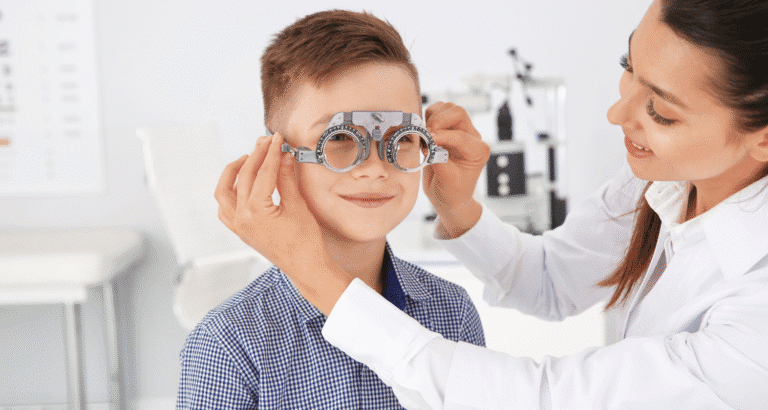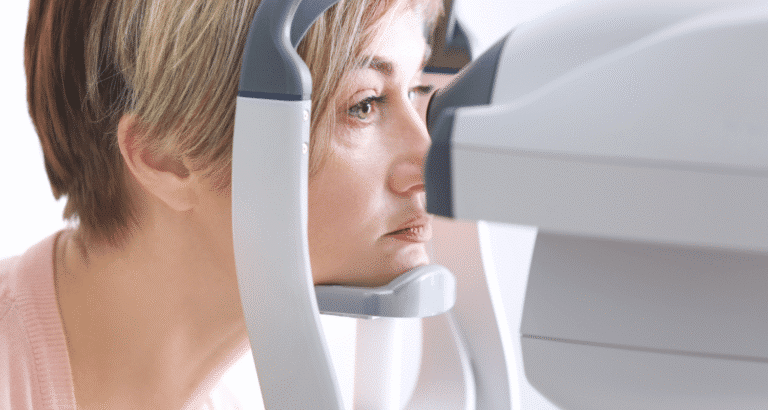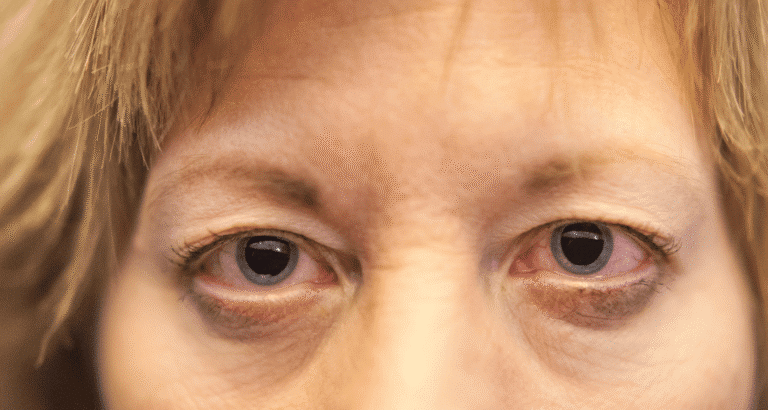When you think of improving at sports, you probably picture lifting weights, running drills, or hitting the gym. But there’s another key part of performance that many athletes ignore: their vision.
Sports vision therapy, or SVT, is a form of eye training that helps athletes see and react better during play. It focuses on building specific visual skills that are critical in most sports, such as tracking a moving ball, reacting quickly, and judging distances.
In this article, we’ll explain how sports vision therapy works, what skills it improves, who can benefit from it, and why it may give you the edge you need.
What is Sports Vision Therapy?
Sports vision therapy is a type of training designed to improve the way your eyes and brain work together during athletic activity. It’s not about correcting blurry vision with sunglasses or contacts. Instead, SVT helps boost how well your eyes perform under pressure.
SVT uses special drills and exercises to strengthen your visual abilities. These might include eye-hand coordination, reaction time, tracking fast movement, or staying focused while your surroundings change quickly.
Whether you play baseball, football, tennis, or any other fast-moving sport, better visual skills can make a big difference in how you play.
What Skills Does Sports Vision Therapy Improve?
Sports vision therapy focuses on training six core visual skills. These are often the hidden part of what separates good athletes from great ones.
Visual Reaction Time
This is how fast your brain can respond to what your eyes see. In sports like tennis or basketball, quick reaction time helps you block a shot, hit a ball, or dodge an opponent.
With vision training, athletes learn to shorten the time it takes to react. Drills can include catching balls thrown at random or tapping lights that flash in quick patterns.
Eye-Hand Coordination
Many sports depend on timing your movements to what your eyes see. Whether it’s hitting a baseball or catching a football, eye-hand coordination is key.
Therapy may involve tossing and catching drills, using rebound walls, or using digital tools that respond to movement.
Dynamic Visual Acuity
This is the ability to see moving objects clearly. Athletes must track fast objects like tennis balls or hockey pucks. Improving this skill can make a big difference in timing and aim.
Even pro baseball players train this ability. Some can see up to 30% better than the average person when it comes to moving targets.

Depth Perception
Depth perception helps you judge how far away something is and how fast it’s moving. It’s useful for field positioning, dodging opponents, or catching fly balls.
Therapy drills might involve tracking objects at different distances or using lenses that change how far things appear.
Visual Concentration and Focus
This skill helps athletes stay focused on what matters most in the game. For example, staying locked on the ball while the crowd moves and shouts around you.
Exercises often train you to keep your focus on one item while ignoring distractions. This helps in high-pressure moments.
Visual Tracking
Good tracking means being able to smoothly follow moving things with your eyes. It helps you stay aware of the ball and your opponents.
Ping pong, bounce-back drills, and digital tracking games are often used in therapy sessions.
How Does Sports Vision Therapy Work?
It starts with a full visual performance evaluation. A sports vision specialist tests your reaction time, tracking skills, depth judgment, and more. This isn’t the same as a regular eye exam.
Once the weak spots are found, a personalized therapy plan is created. Most plans include both in-office visits and home drills.
Some tools that might be used:
- Light boards that train reaction and timing
- Lenses and prisms to challenge focus
- Digital screens with fast-moving targets
- Balance boards for coordination work
Therapy usually runs once or twice a week, depending on age, goals, and sport. The drills get more complex over time as your skills improve.
Who Can Benefit from Sports Vision Training?
Young Athletes (Ages 6–18)
Kids in competitive sports can build strong visual habits early. It can also help with reading and learning if vision problems are slowing them down.
College and Pro Athletes
Many teams already use vision training to boost performance. Small gains in speed or tracking can make a big difference at this level.
Weekend Warriors
Even casual players can improve their game with better focus, faster reflexes, and smoother tracking.
Athletes Recovering from Concussions
Vision therapy is often part of concussion recovery. It helps restore tracking, balance, and focus.
At Barnes Talero Eyecare in Nashville, we offer bilingual care and expert training for athletes of all ages.
Does Sports Vision Therapy Really Work?
Research shows that sports vision therapy helps improve specific visual skills. Studies have found improvements in eye-hand coordination, reaction speed, and tracking accuracy with consistent training.
Some sports have better data than others. For example, convergence and tracking have solid research behind them. Baseball players often use SVT to improve batting. Tennis players use it for ball tracking and reaction.
Real-world feedback is strong too. Parents report better performance and confidence in kids. Athletes say they feel more “in the zone” and less distracted on the field.
The key is this: it works when used for the right skills, with the right training, and done consistently.
Sports Vision Training vs. General Vision Therapy
Standard vision therapy is used to fix things like lazy eye or eye turns. It’s more medical in focus.
Sports vision therapy is all about function. It builds skills that help athletes track, focus, and react faster. You don’t need a medical diagnosis to benefit.
Think of it as strength training for your visual system. You’re not fixing a problem, you’re training for better performance.
Try These At-Home Drills (But Don’t Skip the Pros)
While professional training works best, here are a few simple things to try at home:
- Wall Ball: Throw a ball at a wall and catch it before it hits the ground. Use both hands and switch angles.
- Ping Pong: Great for tracking and fast reaction.
- Pen Cap Drill: Try capping a pen at arm’s length, then switch eyes and repeat.
- Focus Hold: Hold a pencil in front of a busy background. Keep your eyes on it while it moves.
These are good starters but can’t replace a full sports vision program. Always check with a specialist if you want real improvement.
Final Thoughts
Vision plays a major role in sports performance. With the right training, athletes can sharpen their focus, improve their timing, and gain a real edge.
Sports vision therapy helps athletes of all levels, from kids to pros, build faster, sharper visual skills. It’s safe, drug-free, and proven to help in many sports.
If you’re in Nashville and want to see if sports vision training is right for you or your child, Barnes Talero Eyecare offers expert evaluations and training plans. Bilingual care is available in English and Spanish.
Book your appointment today and see the game in a whole new way.
📍 390 Harding Place, Suite 104, Nashville
📞 (615) 485‑6251
FAQs
What is sports vision therapy?
It’s a type of vision training that helps athletes improve visual skills like tracking, focus, and reaction time.
Does sports vision therapy work for athletes?
Yes, studies show it helps with tracking, reaction speed, and eye-hand coordination in sports.
How does vision therapy improve sports performance?
It trains your brain and eyes to work better together. This helps you react faster, focus better, and track moving things more clearly.
Can kids benefit from sports vision training?
Yes, young athletes can build strong visual skills early. It may also help with learning and attention in school.What
visual skills does sports vision therapy target?
It works on reaction time, tracking, depth perception, visual focus, and eye-hand coordination.




